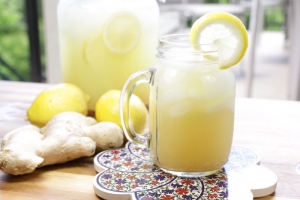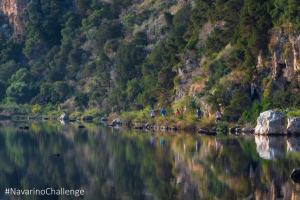The bountiful islands of Greece feel like a breath of fresh air in so many ways. Life by these seas is slow-paced and indulgent, simple but breathtakingly beautiful. Time seems to have slowed down here, and when things at home get hectic, that’s often just the thing we need. Nothing brings a family closer together or creates longer-lasting memories than spending a week or two just living in the moment.
One of the best things about Greece is that there are so many islands to visit (227, in fact) and that each one brings something unique to the table. You can’t go wrong choosing any of the islands for a holiday, but doing a bit of research beforehand never hurt anyone – especially when you’re bringing the kids along.
Corfu
Spectacular Corfu is an island of lush greenery, dramatic hills, and quaint little villages where beautiful and varied beaches abound. In the west, you’ll find Glyfada and Saint Gordios with their stretches of soft sand and the pebbly playground of Paleokastritsa. Meanwhile, the island’s north side offers warm shallow waters for swimming and stunning rock formations on beaches like Sidari. From sandcastles to water sports, beaches are always a hit with the kids.
The UNESCO-ranked Corfu Town is where kids tend to love running through the mazes of traditional kantounias, winding alleyways that encircle the city’s distinctly Venetian architecture. It’s the perfect place to introduce the kids to some local cuisine and scope out a restaurant serving pastitsada (best enjoyed with some local ginger beer).
Crete
The Greeks call Crete Megalónisos – The Great Island – and it’s well worth a visit to find out why. Crete’s sunny beaches and sparkling coves mingle with ancient caves and ruins that could make anyone’s fantasy run wild. This is where you’ll find the heart of Europe’s oldest civilization, Knossos, and its spectacular palace ruins. Thanks to the efforts of modern archaeology, visiting Knossos in the twenty-first century is like walking the kids through a history lesson come to life. And for even more learning about the history and culture of Crete, head to the capital city of Heraklion and explore the interactive kid-friendly museums there.
For a beach day, Chania on the west side of the island is the place to go. The white sandy beaches there feel like they’re on a desert island but are just a stone’s throw from the city’s gorgeous Venetian harbor and waterfront restaurants where the kids can have a taste of freshly caught calamari. Kids will particularly love the lagoons of Elafonisi and playing in the rock pools at Kato Gouves.
Rhodes
The gorgeous island of Rhodes has much to look forward to, not the least of which its magical east coast covered in beaches. For thirty miles, all you’ll see is soft golden sands and warm shallow waters. If you came to Greece looking for rest and relaxation, you’ve found it. Faliraki beach is one of its most family-friendly stretches, with plenty of recreation for kids like the Faliraki Water Park and a Luna Park. But if you’re after something more slow-paced and quieter, try Agathi and Kallithea Springs as well. A bonus is that Rhodes has the longest-lasting summer of all the Greek islands, so if you’re lucky enough to get away in the off-season you can enjoy these places when the biggest crowds haven’t arrived yet.
Rhodes Town is a UNESCO World Heritage-listed haven of car-free cobbled streets and medieval fortresses which feels like taking a walk through history. You can even wander along the walls of the old town and take in all the great views from up high. At sunset, head to the harbor and watch the fishermen reel in their catch of the day (then head to one of the local restaurants for a fresh taste). Kids will also love getting up close to the underwater world of the eastern Med at the Marline Aquarium.
Naxos
With crystal clear waters that are completely safe for children to play and swim in, as well as soft golden sands, Agios Georgios, Agios Prokopios, and Agia Anna are all great central options. They’re perfect for when you want to be close to the sights as well as the affordable shops and restaurants in town. For something a bit more adventurous, head to Plaka Beach for windsurfing lessons accompanied by the prettiest sunset on the island.
Inland, you can hike 40km worth of trails that take you past the islands many ancient villages – each of which is well worth exploring but the former capital of Haldiki especially so. Take a tour of one or more of these stunning mountain villages where you’ll come across the heart of the local culture and fascinating historical monuments to match. Since Naxos is rare in that the island still produces most of its food locally, you know that no matter where you choose to dine, you’re going to get the really good stuff for yourself and your little ones.













